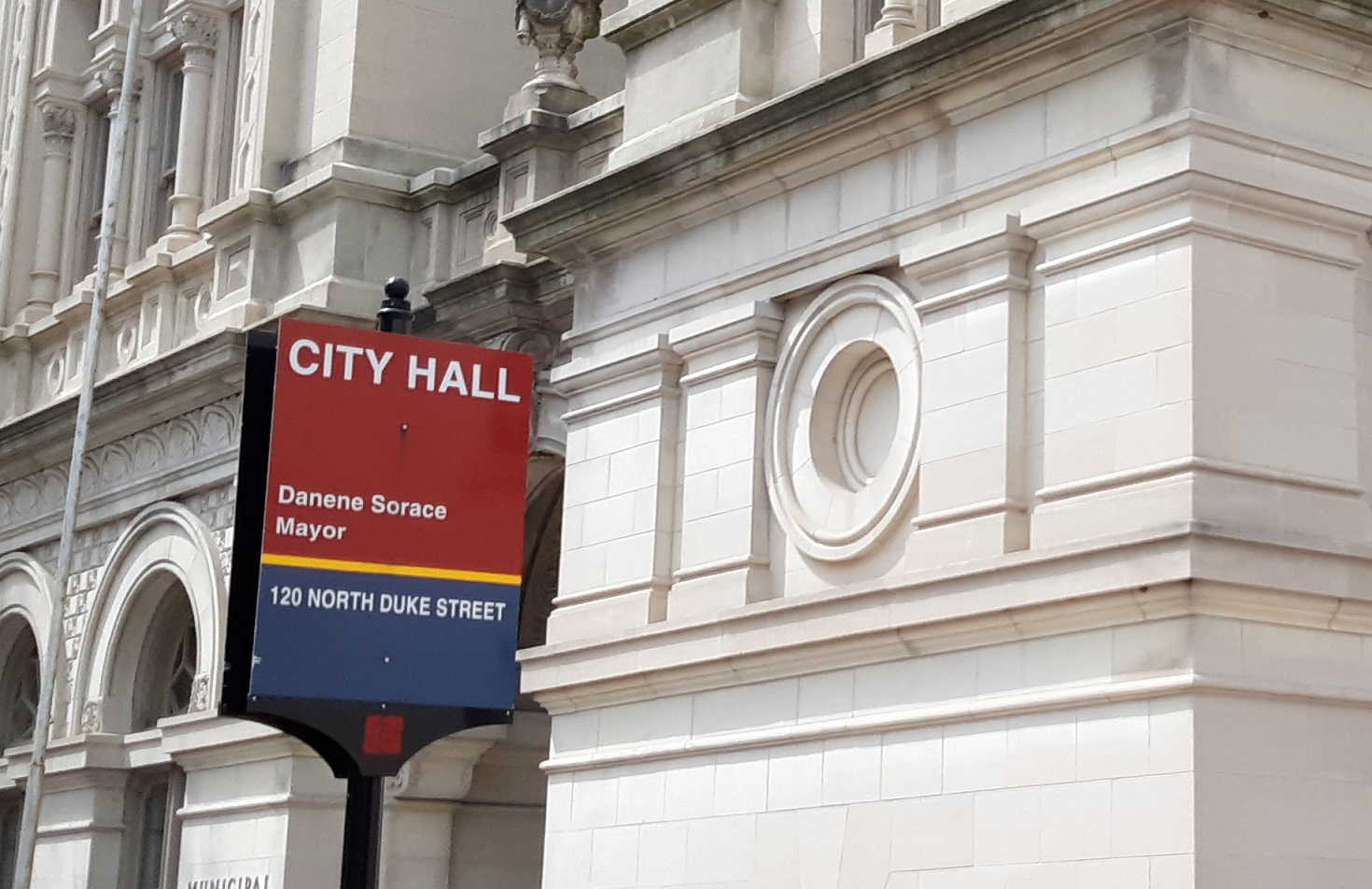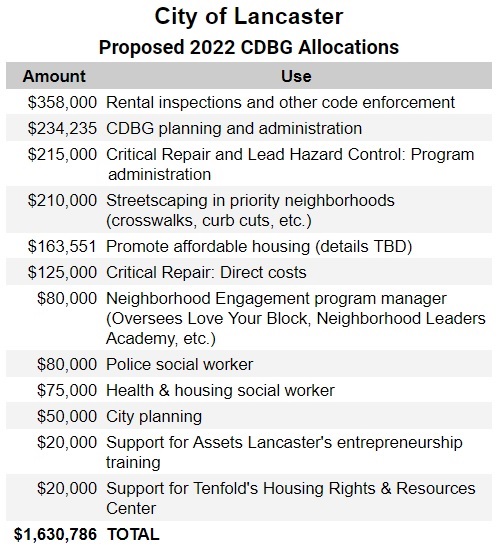Update: On Tuesday, July 12, City Council adopted Lancaster’s 2022 Community Development Block Grant Action plan.
Previously reported:
With half the year already gone, why is Lancaster only now wrapping up its plans for how to use its $1.6 million in 2022 Community Development Block Grant funding from the U.S. Department of Housing & Urban Development?
That’s HUD’s fault, not City Hall’s, Community Development Bureau Chief Craig Walt told City Council on Tuesday. HUD is supposed to announce its CDBG allocations before Jan. 1, but it keeps falling behind. This year, the city didn’t get word until early June.
Once it does, the city develops its allocation plan, which it sends back to HUD for approval. Allocations must align with the city’s 2021-25 “consolidated action plan,” an overall strategy for community development that is created with public input. There is thus significant continuity from year to year.
That process identified affordable housing as priority No. 1. Accordingly, the largest appropriation, a little over one-fifth of the city’s $1.63 million ($1.6 million plus $25,000 in projected program income), will go toward Lancaster’s rental inspection program, which ensures that landlords comply with the city’s health and safety codes.
The second-largest amount will go toward planning and administration. Other allocations will support streetscaping, the city’s social workers (a relatively new initiative), lead hazard abatement and the critical repair program, which provides loans and grants to lower-income homeowners to fix problems, such as a failing roof, that could render their homes uninhabitable.
Public input sought
The city of Lancaster has posted its draft 2022 CDBG Action Plan online and is accepting public comment through July 19.
Comments may be emailed to city community development staff members Craig Walt, Simone Dia or Brynn McGowan.
As Walt noted, the city is using CDBG to provide matching funds for a program underwritten by another HUD grant — the city’s lead remediation program. HUD’s $9.1 million grant for it is the largest in city history.
Last year, City Council approved $5 million of its $39.5 million in American Rescue Plan Act funds for affordable housing. To that, the city is adding $429,362 in leftover 2021 CDBG funding, along with $163,551 from 2022.
How the money will be spent will depend on the outcome of the city’s request for proposals for affordable housing projects, released last month.
Asked why ARPA funds are being supplemented with CDBG funds, city administrators said they are following the 2021-25 plan, which was developed before it was known that ARPA would be forthcoming. Additionally, different funding streams have different regulations and constraints, so having multiple sources of funding to deploy is advantageous, Walt said.
ESG zeroed out
CDBG is one of three HUD grants Lancaster typically receives. The other two are the Emergency Services Grant, or ESG, which funds homelessness services; and the HOME grant, which subsidizes affordable housing projects. During the pandemic, those grants were supplemented with additional dollars from Congress’ pandemic relief legislation.
In 2021, Lancaster spent a little over $220,000 in ESG funds, almost all of it on rapid rehousing. This year, however, it will receive no ESG funding at all.
That’s simply the result of HUD’s funding formula and the available dollars this year, and is unconnected with anything the city did or didn’t do, Community Devleopment Administrator Brynn McGowan said.
In hopes of offsetting the lost ESG grant, the city has joined the Lancaster County Redevelopment Authority and local nonprofits to seek about $389,000 from the state Department of Community and Economic Development, which has a pot of ESG funds to distribute within Pennsylvania.
The applicants should hear by early August if they’ve been approved, Walt said.
Along the same lines, the city and county have been partnering on planning and administering their HOME grant. For 2022, the city and county are receiving $2.16 million through HOME, of which the city’s share is $558,057, plus $62,006 for administration, Walt said.
As required by HUD, the city consults with a broad swath of stakeholders when it plans out how to use its HUD grants, including the Lancaster County Homeless Coalition, the county redevelopment authority and various nonprofits.
Among the latter are the Community Action Partnership, which has received funding to support its domestic violence services; Tenfold, the county’s principal housing-related nonprofit; and United Way of Lancaster County, which operates the 211 social-service referral service and is a lead entity in the county’s “continuum of care” for homelessness.
When first rolled out in the 1970s, the CDBG program was far more generous, but funding cuts and broader eligibility have dramatically eroded the allocations that cities receive. Decades ago, there was enough money to support a robust community grantmaking process, Mayor Danene Sorace said.
HUD’s delays in announcing awards have also complicated accounting. Increasingly, money that’s been appropriated in one year has to be rolled over into the next, Walt said. That puts spending out of alignment with HUD’s reporting deadlines, resulting in sums technically being reported as unspent, even though they have been allocated and will be spent going forward.








